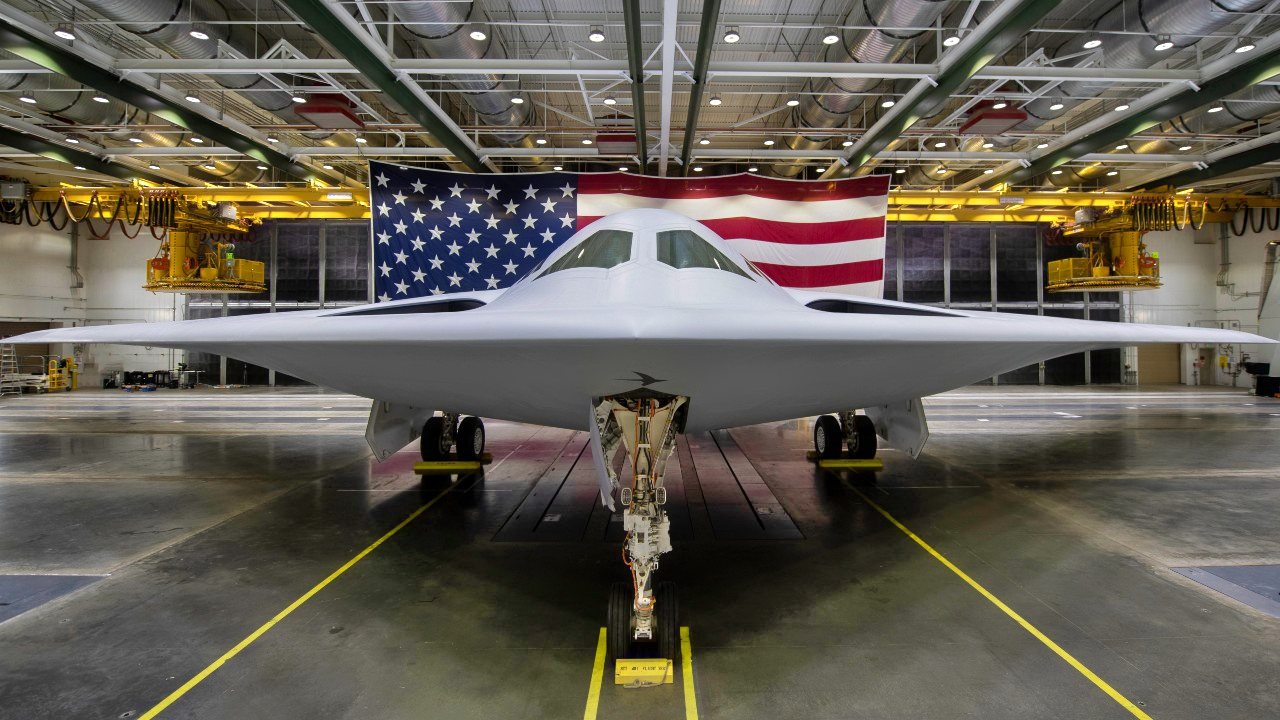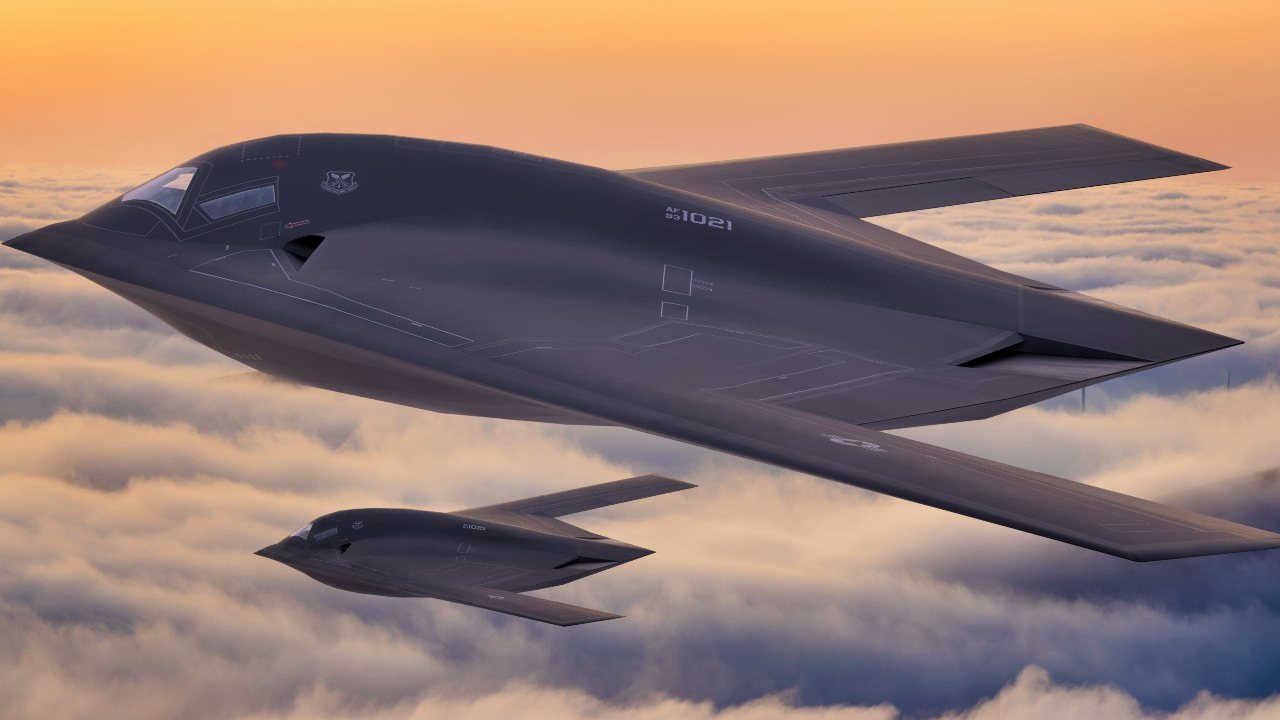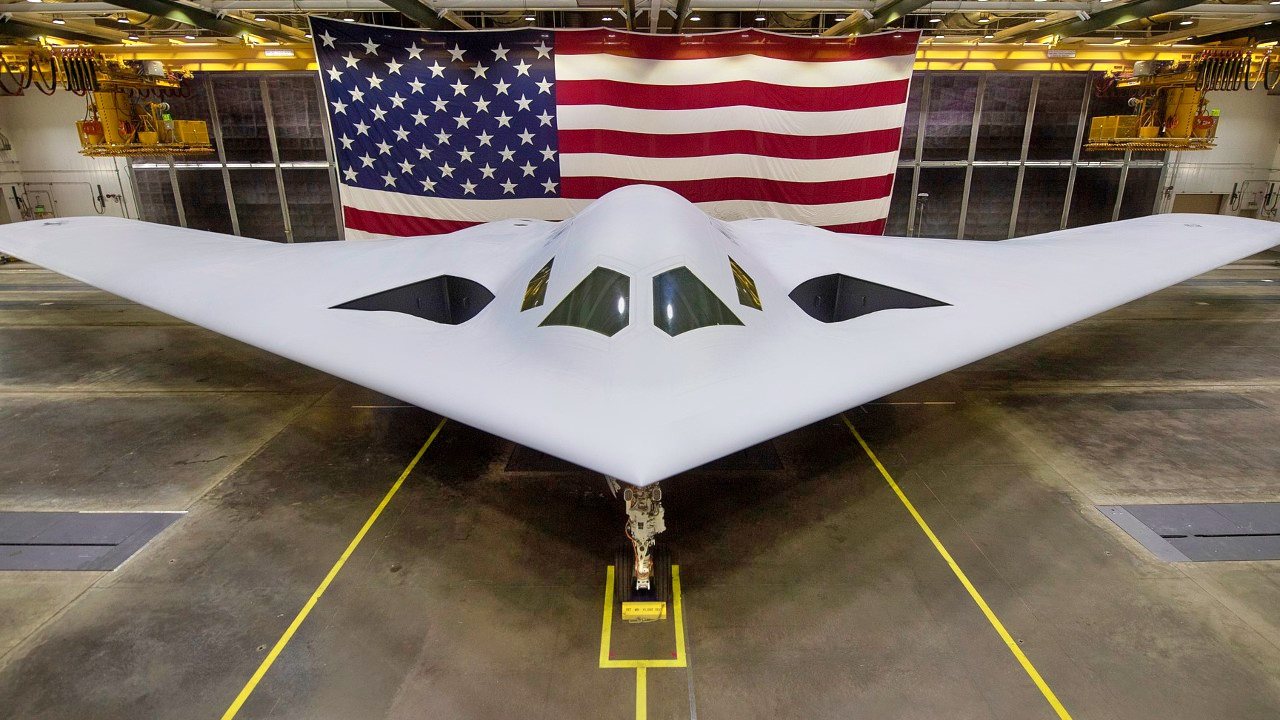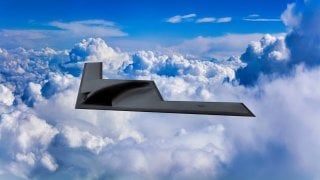The B-21 Raider Is Far More Than Just a Stealth Bomber
Commentary on the B-21 remains largely confined to the realm of speculation. After all, the warbird remains shrouded in secrecy. Still, it’s not too soon to start ruminating about its development, how the U.S. Air Force might use it, and what dwellers in the wretched hive of scum and villainy might do to blunt its impact.
The WarZone had a scoop on the U.S. Air Force B-21 Raider back in September of last year, riffing on Secretary of the Air Force Frank Kendall’s recent remarks at the Air & Space Forces Association’s Air, Space, and Cyber symposium in National Harbor, Maryland. Secretary Kendall portrayed the newfangled stealth bomber as part of a “family of systems” that likely includes a retinue of low-observable drones—“collaborative combat aircraft” in air-force newspeak—at the very least.
B-21 Raider: More Than a Bomber
Drones accompanying the Raider as part of the family of systems could render solid service by riding shotgun to defend it, or by helping out with such key tactical functions as scouting, counter-scouting, and command-and-control. Kendall reported, moreover, that the bomber itself is designed to execute missions far beyond simply penetrating hostile airspace, World War II Combined Bomber Offensive style, and dumping large volumes of ordnance on targets assigned to it. For example, it could presumably act as a surveillance, communications, or battle-management platform.
This is not your granddad’s B-17 Flying Fortress.
Commentary on the B-21 remains largely confined to the realm of speculation. After all, the warbird remains shrouded in secrecy. Still, it’s not too soon to start ruminating about its development, how the U.S. Air Force might use it, and what dwellers in the wretched hive of scum and villainy might do to blunt its impact.
With regard to development, testing, and production, one hopes the air force will proceed with all dispatch consistent with scrupulous fidelity to the scientific method. An aircraft is a hypothesis, and you can never finally prove a hypothesis; you can only disprove it. The process is easier in the engineering world, where you transform an idea into metal, predict how the widget should perform, run field trials to see whether the widget lives up to its billing, and approve or improve it or junk it for the next big idea. Builders and aviators should ruthlessly and remorselessly critique the B-21’s performance once it starts flying, presumably late this year or early next year.
Do not let military can-do culture bypass scientific rigor.
Nor should air-force magnates order the bomber into serial production until the first handful of experimental copies has performed well, withstanding efforts at falsification. “Concurrency”—mass-producing a plane, ship, or other complex weapon system before it has been fully tested, then retrofitting fixes into the platforms as problems turn up—has been tried repeatedly in recent decades. History has frowned on it—as the current air-force leadership concedes. Let’s not skimp on the scientific due diligence this time around.

But suppose the Raider does prove out. How will the U.S. Air Force employ it? The possibilities are intriguing. The air force covets upwards of one hundred copies of the plane. That would dwarf the twenty-plane inventory of B-2 Spirits, the B-21’s 1990s-era predecessor. Leave aside the Raider’s foremost mission, nuclear deterrence. That deterrence is pivotal to U.S. military strategy hardly needs restating. But think about the possibilities in conventional scenarios. It would be malpractice not to integrate such nonnuclear armaments as the extended-range joint air-to-surface standoff missile (JASSM-ER) and the long-range anti-ship missile (LRASM), a JASSM spinoff, onto the B-21. A large force of B-21s armed with precision-guided air-to-surface missiles toting conventional payloads would provide commanders with mass—a crucial ingredient of combat power—in a way the ultra-lean B-2 force never could.
Quantity has a quality all its own.
Air power is what Admiral J. C. Wylie termed a “cumulative” mode of warfare waged by conducting numerous tactical actions unrelated to one another in time or in space. Unlike “sequential” warfare, it doesn’t drive toward any particular place on the map or toward a decisive showdown with enemy main forces. Rather, it’s a strategy of a thousand cuts, doing modest damage in scattershot engagements all over the place in order to sap the enemy’s warmaking potential over time. A lot of small losses can add up to something big and debilitating.
Naval warfare is chiefly cumulative in nature, and so is air power.
While extolling cumulative operations as an adjunct to sequential operations, however, Wylie insists that cumulative operations are never decisive in themselves. They’re a difference-maker in close-run struggles. But they can be highly effective if you have enough assets. That’s the value of mass. Cumulative operations unspool at many places on the map, so they’re dispersed in geographic space. But if you can concentrate dispersed actions in time, striking hard more or less simultaneously at those places, you can hope to generate wrenching psychological shock among the enemy leadership, people, and government while playing havoc with military forces and industries that support them.
For lack of a better term, call it the shock-and-awe effect.
Now map this onto the Western Pacific. Squadrons of furtive B-21s able to operate within China’s anti-access zone could strike at a People’s Liberation Army Navy (PLA Navy) invasion fleet at its moorings, or in transit to whatever the battleground might be. Or they could go after piers, ammunition or fuel storage, and shipyard infrastructure that supports the fleet. Sink or heavily damage the fleet, or cripple its support, and China stands little chance of prevailing in the Taiwan Strait, South China Sea, or elsewhere. Maybe Wylie is correct and air action wouldn’t put an end to the fighting. But it would certainly balk Chinese strategy—confounding Beijing’s goals while hastening U.S. and allied forces toward victory.
Air-power advocates have long claimed that air power wins wars. Maybe it would in this instance. It would certainly be of the essence.
Or if U.S. commanders and political leaders decided on a strategy of forbearance, abjuring strikes along the coasts of a nuclear-armed antagonist, they could deploy B-21s more defensively along the first island chain. Bombers could disgorge volleys of JASSM-ERs and LRASMs to defend the islands against amphibious assault while helping close the straits to Chinese maritime movement. Bottling up the PLA Navy, maritime militia, and merchant fleet within the China seas would expose Chinese shipping to destruction at allied commanders’ discretion.
The U.S. Marine Corps regards marine forces on Okinawa and elsewhere along the island as America’s “stand-in force,” a contingent that defies Beijing’s anti-access efforts, scouts for the U.S. Navy fleet, and dishes out firepower of its own to repel efforts to land troops on the islands or force the straits. The U.S. Air Force’s Raider force could act as a skyward arm of the stand-in force and the fleet, lending its own firepower to deny the PLA access to waters and skies beyond the China seas. The air force has increasingly embraced its role as a sea service, witness a simulated raid on Russia’s Black Sea Fleet in 2020, imagery of non-stealthy U.S. bombers dropping precision minefields and firing LRASMs, an ongoing effort at dispersing airfields and beefing up logistics around the Pacific to augment the force’s combat resilience, and on and on.

Such endeavors would be all the more lethal once supplemented by masses of stealth bombers able to get close to their targets while evading detection, targeting, and counterfire.If successful, in short, the B-21 will present U.S. and allied commanders the opportunity to exploit command of the air before winning it. Aerial command generally demands that an air force suppress or destroy enemy air defenses, a laborious and time-consuming chore full of peril. A bomber contingent able to penetrate defended airspace and carry out offensive strikes while hostile air defenses remain in the fight would be an invaluable commodity for combat—and therefore for conventional deterrence.
Now, lest we close on too upbeat a note, the enemy gets a vote in American martial schemes and will doubtless cast it in the negative. PLA strategy is predicated on “systems-destruction warfare,” an approach meant to cut the sinews binding together an enemy system-of-systems such as the one U.S. Air Force commanders have in mind for the bomber fleet and for the force as a whole. Sever the connective tissue and the whole thing comes apart into an uncoordinated jumble. If networks using the electromagnetic spectrum are what bind together U.S. forces, imparting cohesion to their efforts, then they will become a prime target for Chinese systems-destruction warfare.

B-21 and China
Think about the repercussions. If PLA defenders can disrupt friendly use of the spectrum, including within the B-21 Raider family of systems, they will have isolated each family member—degrading U.S. offensive air power and its ability to lash out at Chinese surface forces. And they will have improved their chances of taking down individual units isolated from mutual support from the others. One hopes the U.S. Air Force—and the other armed services, for that matter—are being self-critical about this potential weak spot in their force design and tactics, techniques, and procedures and figuring out how to shore it up.
There is no substitute for the scientific method.
So from the sea services, here’s wishing our air-force brethren well. We need you.
About the Author: Dr. James Holmes
Dr. James Holmes is J. C. Wylie Chair of Maritime Strategy at the U.S. Naval War College and a Distinguished Fellow at the Brute Krulak Center for Innovation & Future Warfare, Marine Corps University. His books include Red Star over the Pacific, an Atlantic Monthly Best Book of 2010, and a fixture on the Navy Professional Reading List. The views voiced here are his alone.


